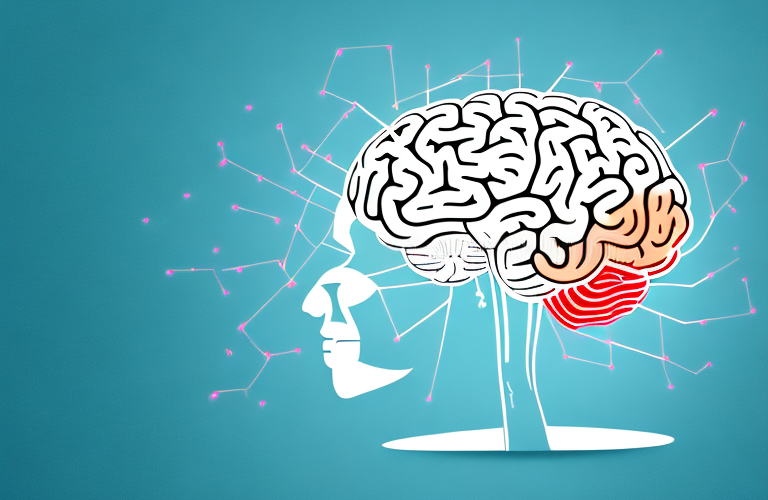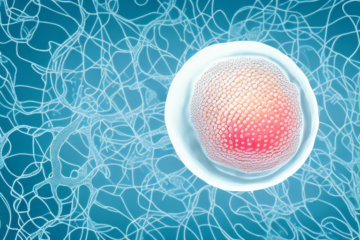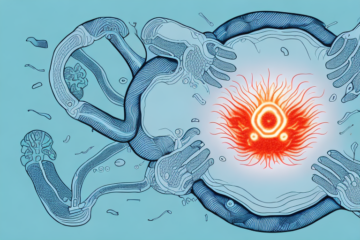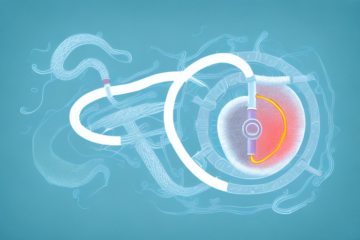Headaches and migraines are two health conditions that can be very debilitating to those who suffer from them. While they may seem similar, there are distinct differences between headaches and migraines. For those who struggle with either one, it’s important to understand what causes them and how they can be treated. In this article, we will explore the causes and symptoms of headaches and migraines, traditional and alternative treatment options, environmental triggers, and how to manage and prevent them.
What are headaches and migraines?
A headache is a pain or discomfort in the head, scalp, or neck region. It can be characterized by a dull ache, sharp pain, or throbbing sensation. In contrast, a migraine is a neurological disorder that can cause moderate to severe pain on one or both sides of the head. Migraines are usually accompanied by other symptoms such as nausea, vomiting, and sensitivity to light and sound.
Headaches and migraines can be caused by a variety of factors, including stress, lack of sleep, dehydration, and certain foods or drinks. It is important to identify the triggers that can lead to headaches and migraines and take steps to avoid them. Treatment options for headaches and migraines include over-the-counter pain relievers, prescription medications, and lifestyle changes such as regular exercise and stress management techniques.
Causes of headaches and migraines
The causes of headaches and migraines vary depending on the individual, but they can be brought on by a number of factors such as stress, hormonal changes, dehydration, poor diet, lack of sleep, and medication overuse. Migraines have been linked to changes in the brain and imbalances in neurotransmitters, which can be triggered by various environmental and lifestyle factors.
Another common cause of headaches and migraines is exposure to certain triggers such as bright lights, loud noises, strong smells, and even certain foods. For some individuals, weather changes or changes in altitude can also trigger headaches or migraines.
In addition to the physical symptoms, headaches and migraines can also have a significant impact on a person’s mental health and well-being. Chronic headaches and migraines can lead to anxiety, depression, and social isolation, as individuals may avoid activities or situations that they fear may trigger their symptoms. Seeking treatment and support from healthcare professionals can help individuals manage their symptoms and improve their quality of life.
How to differentiate between a headache and migraine
It’s important to know the difference between a headache and migraine so that you can receive the appropriate type of treatment. While headaches can be uncomfortable, they are usually mild and can be relieved with over-the-counter medication. Migraines, on the other hand, can be intense and may require prescription medication to manage the symptoms. Migraines often manifest as a pulsing, throbbing pain that is more severe than a regular headache, and can last for hours or even days.
Other symptoms of migraines may include sensitivity to light and sound, nausea, and vomiting. These symptoms are not typically associated with regular headaches. Additionally, migraines can be triggered by certain foods, stress, hormonal changes, and other factors, whereas headaches may be caused by tension, dehydration, or sinus issues.
If you are experiencing frequent headaches or migraines, it’s important to speak with a healthcare professional to determine the underlying cause and receive appropriate treatment. Keeping a headache diary can also be helpful in identifying triggers and patterns, which can aid in prevention and management of symptoms.
Common triggers for migraines
Some common triggers for migraines include hormonal changes, stress, changes in sleep patterns, bright or flashing lights, loud noises, strong smells, certain foods and drinks, and environmental changes such as weather or altitude changes. Identifying your specific triggers can help you to manage your migraines and prevent them from occurring in the first place.
It is important to note that triggers can vary from person to person and may not always be obvious. Keeping a migraine diary can be helpful in identifying patterns and potential triggers. Additionally, some medications and medical conditions can also trigger migraines, so it is important to discuss any concerns with your healthcare provider.
Symptoms of a headache and migraine
The symptoms of a headache typically include a dull ache or pressure in the head, neck, or scalp region, along with tenderness and aching in the shoulders and neck. Migraines, on the other hand, often have additional symptoms such as sensitivity to light and sound, nausea, vomiting, and dizziness. These symptoms can be severe and can impact daily activities and quality of life.
It is important to note that headaches and migraines can also be accompanied by other symptoms such as blurred vision, difficulty concentrating, and fatigue. In some cases, individuals may experience an aura before the onset of a migraine, which can include visual disturbances such as flashing lights or zigzag lines.
While the exact cause of migraines is not fully understood, triggers such as stress, certain foods, and hormonal changes can contribute to their onset. It is important for individuals who experience frequent headaches or migraines to speak with a healthcare provider to determine the best course of treatment and management.
Traditional treatment options for headaches and migraines
Traditional treatment options for headaches and migraines include over-the-counter pain relievers such as ibuprofen and acetaminophen. These medications can be effective for mild to moderate headaches but may not be strong enough to manage migraines. Prescription medications such as triptans and beta-blockers are often prescribed for severe headaches and migraines.
In addition to medication, lifestyle changes can also help manage headaches and migraines. Regular exercise, stress management techniques such as meditation or yoga, and getting enough sleep can all help reduce the frequency and severity of headaches. It is also important to identify and avoid triggers such as certain foods, alcohol, and bright lights.
Alternative therapies such as acupuncture, massage, and chiropractic care have also been found to be effective in managing headaches and migraines for some individuals. It is important to discuss these options with a healthcare provider before trying them, as they may not be appropriate for everyone.
Alternative treatments for headaches and migraines
Alternative treatments for headaches and migraines include acupuncture, massage, and relaxation techniques such as yoga and meditation. These treatments can be effective in reducing stress and promoting relaxation, which are common triggers for headaches and migraines.
Another alternative treatment for headaches and migraines is chiropractic care. Chiropractors use spinal manipulation and other techniques to alleviate tension and improve spinal function, which can help reduce the frequency and severity of headaches and migraines.
In addition, some people find relief from headaches and migraines through dietary changes. Certain foods and drinks, such as caffeine, alcohol, and processed foods, can trigger headaches and migraines in some individuals. By identifying and avoiding these triggers, some people are able to reduce the frequency and severity of their headaches and migraines.
Preventative measures for frequent headache or migraine sufferers
Preventative measures for frequent headache or migraine sufferers include maintaining a consistent sleep schedule, reducing stress, avoiding triggers such as certain foods and drinks, and staying hydrated. It’s also important to avoid overuse of medication, as this can lead to rebound headaches or migraines.
In addition to these preventative measures, some people find relief through alternative therapies such as acupuncture, massage, or cognitive behavioral therapy. It’s important to work with a healthcare provider to determine the best course of treatment for your individual needs. Keeping a headache diary can also be helpful in identifying triggers and patterns, allowing for more targeted prevention strategies.
How to manage a migraine at home
If you’re experiencing a migraine, there are several things you can do to manage the symptoms at home. Resting in a quiet, dark room can help to reduce sensitivity to light and sound. Applying a cold compress to the head or neck can also be helpful in reducing pain and discomfort. Over-the-counter pain relievers and anti-nausea medication can also provide relief.
In addition to these home remedies, it’s important to identify and avoid triggers that may be causing your migraines. Common triggers include stress, certain foods, changes in sleep patterns, and hormonal changes. Keeping a migraine diary can help you track your symptoms and identify potential triggers.
If your migraines are severe or frequent, it’s important to seek medical attention. Your doctor may prescribe medication to prevent migraines or provide stronger pain relief. They may also recommend lifestyle changes, such as regular exercise and stress management techniques, to help prevent future migraines.
The link between diet and headaches/migraines
Diet can play a significant role in the occurrence of headaches and migraines. Foods and drinks that contain caffeine, alcohol, and artificial sweeteners can all be triggers for these conditions. It’s important to maintain a healthy and balanced diet and avoid foods that are known triggers.
In addition to avoiding trigger foods, it’s also important to make sure you are getting enough water. Dehydration can be a common cause of headaches, so staying hydrated can help prevent them. Eating regular meals and not skipping meals can also help prevent headaches caused by low blood sugar.
Some foods have been found to have potential benefits for preventing headaches and migraines. These include foods high in magnesium, such as spinach, almonds, and avocados, and foods high in omega-3 fatty acids, such as salmon and walnuts. Incorporating these foods into your diet may help reduce the frequency and severity of headaches and migraines.
The impact of stress on headaches/migraines
Stress is a common trigger for both headaches and migraines. Taking steps to reduce stress, such as practicing relaxation techniques or engaging in physical activity, can help to prevent these conditions from occurring.
It is important to note that stress can also exacerbate existing headaches and migraines. When stress levels are high, the pain and intensity of these conditions can increase. Therefore, it is crucial to manage stress levels not only as a preventative measure but also as a means of managing symptoms.
How to identify and avoid environmental triggers
Identifying and avoiding environmental triggers such as bright lights, strong smells, and loud noises is important in managing headaches and migraines. Paying attention to changes in weather or altitude can also be helpful in preventing these conditions from occurring.
In addition to the common triggers mentioned above, certain foods and drinks can also trigger headaches and migraines in some individuals. These can include alcohol, caffeine, chocolate, aged cheeses, and processed meats. Keeping a food diary and tracking any symptoms can help identify potential triggers and allow for better management of these conditions.
Coping mechanisms for chronic headache/migraine sufferers
Chronic headache or migraine sufferers may need to develop coping mechanisms to manage their symptoms on a daily basis. This may include maintaining a consistent sleep schedule, staying hydrated, and avoiding triggers. Seeking support from family, friends, or a healthcare provider can also be helpful in managing the emotional impact of these conditions.
Another coping mechanism for chronic headache or migraine sufferers is practicing relaxation techniques such as deep breathing, meditation, or yoga. These techniques can help reduce stress and tension, which are common triggers for headaches and migraines.
In addition, keeping a headache or migraine diary can be helpful in identifying patterns and triggers. This diary can include information such as the time of day the headache occurred, what activities were being done at the time, and what foods or drinks were consumed. This information can help individuals make lifestyle changes to avoid triggers and manage their symptoms more effectively.
The role of genetics in headache/migraine occurrences
There is evidence to suggest that genetics may play a role in the occurrence of headaches and migraines. If you have a family history of these conditions, it may be important to monitor your symptoms closely and seek medical attention if necessary.
Research has shown that certain genes may be associated with an increased risk of developing migraines. These genes are involved in regulating pain sensitivity and inflammation in the brain. However, it is important to note that genetics alone may not be the sole cause of migraines, as environmental factors and lifestyle choices can also contribute to their occurrence.
In addition, genetic testing may be available for individuals with a family history of migraines. This testing can help identify any potential genetic risk factors and allow for early intervention and management of symptoms. However, it is important to discuss the benefits and limitations of genetic testing with a healthcare professional before undergoing any testing.
When to see a doctor about your headache or migraine symptoms
If you experience frequent or severe headaches or migraines, it’s important to seek medical attention. A healthcare provider can help to diagnose the underlying cause of your symptoms and develop an appropriate treatment plan.
It’s also important to see a doctor if your headache or migraine symptoms are accompanied by other symptoms such as fever, neck stiffness, confusion, or difficulty speaking. These could be signs of a more serious condition and require immediate medical attention.
Debunking common myths about headaches and migraines
There are many myths surrounding headaches and migraines, including the idea that they are just a normal part of life or that they can be cured with a simple remedy. It’s important to debunk these myths and understand the true causes and treatments for these conditions.
In conclusion, headaches and migraines can be very disruptive to daily life, but there are many ways to manage and prevent these conditions. By identifying your triggers, developing healthy habits, and seeking appropriate medical attention when necessary, you can maintain a better quality of life and reduce the impact of these conditions on your daily activities.
One common myth about headaches and migraines is that they only affect adults. However, children and teenagers can also experience these conditions. In fact, migraines are one of the most common neurological disorders in children. It’s important for parents and caregivers to recognize the signs and symptoms of headaches and migraines in children, and to seek appropriate medical attention if necessary.
Another myth is that headaches and migraines are always accompanied by pain. While pain is a common symptom, some people may experience other symptoms such as nausea, vomiting, sensitivity to light or sound, or visual disturbances. It’s important to recognize and address these symptoms in order to effectively manage and treat headaches and migraines.










